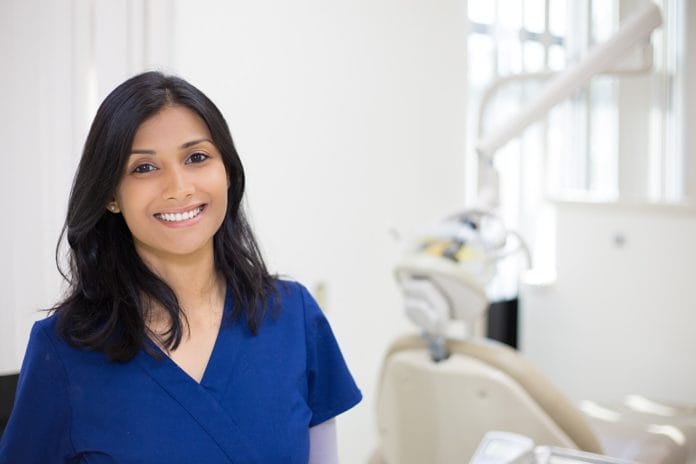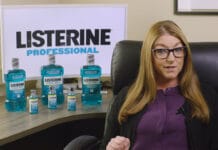Ah, the word “production.” About half of the hygienists reading this are already annoyed, simply at the mention of the word. The other half are intimately familiar, often paid based on their numbers, knowing down to the dollar how much they typically produce per hour.
Production is possibly the most misinterpreted word in the entire field of dentistry. For some, the word embodies visions of unnecessary treatment and product-pushing. Sure, that does happen in some offices. Actually, production is a way to keep a person accountable for their time – and it doesn’t have to mean unethically. Here are a few ways to increase your production while maintaining a clear and northern-pointing moral compass.
Valuation and Body Language
First things first, you need to begin by assessing the patient’s level of value in your services. There can be three tiers of a person’s valuation, in my opinion. They can be closed, insurance-driven, or open. And, figuring out which kind you have in front of you does not have to be an eight-step motivational interviewing process we learned in school or some sort of reverse psychology exercise.
Simply ask them what they care about. Is this a patient who is motivated by appearances and wants clear aligners and whitening? Is this a person who would never dream of spending a thousand dollars saving a tooth when they could pull it for cheaper? Just ask.
If you are a hygienist who has difficulty picking up on social cues, this may be more challenging for you. This comes easily for some and not as easy for others, and that is fine! If you are new to the profession and haven’t experienced the full range of personality types you will encounter, this should be helpful for you as well.
Patients will give hints, often inaudibly, that can help to point you in the direction of the kind of patient you have in front of you. In the first five minutes of the appointment, you should be able to assess with which type you are working, and how to communicate with them respectfully. If the person is friendly immediately, you can eliminate the closed type. Deciphering between insurance-driven and open will be explained below.
Three Types of Patients
Type #1: Closed − This is a person who can be subtle or obnoxious. A person may come in and, immediately upon sitting down, tell you exactly how to do your job. “I am only here for a cleaning, and don’t you start using that sharp thing on my gums again.” That is a person who is very easy to read.
Sometimes, they are more subtle. Does the person seem short with you with seemingly innocuous questions? Do they answer “Fine” to every question you ask without divulging any more information? “How was your summer?” or “How was your holiday?” That is patient type number 1–closed.
Often, this is because they do not want to start a conversation to give you the opportunity to try to upsell them. They are on the defensive. This is different from a patient who makes statements like, “I only want what is covered by insurance.”
A person who is willing to chat with you but simply does not want out-of-pocket costs is a much different kind of patient than one who is very defensive immediately upon walking in the door. For the latter, you are best moving on and putting your precious time into someone more open. They have a low valuation of your services, and that’s that. You will actually anger them by not respecting this boundary.
You are still obligated to tell them that they require additional services but tell them at the end of the appointment in a short statement and reinforce that you are required to inform them by law, even if they scoff, refuse to schedule, and leave in a huff.
This type is rare. Understand that these are adults, and you cannot force them to have their treatment completed. You can only inform them of the ramifications they will incur as a result of inaction and sit back while their teeth deteriorate.
As they say, “You can lead a horse to water, but you can’t make it drink.”
Type#2: Insurance-Driven − A person who makes statements that they only want what is covered by insurance is more manageable. This is the kind of patient I actually prefer. This is a patient who is cost-conscious. However, they often have a higher valuation of services. After all, they contribute to their insurance and want to get the most out of it, right?
When approaching a patient like this about an additional service that is not covered 100%, say, non-surgical periodontal therapy/SRP, start by explaining the need for the procedure. When framing what their estimated portion would be, please begin by showing them the amount that their insurance will pay! This is important to them. Respect that this is a huge value to them. Be transparent about it to help them see that while they may need to pay 20%, a large majority of it will, in fact, be paid by their beloved insurance carrier.
It is helpful to make suggestions for products to them in terms of cost, saying things like, “While this fluoride may cost $40, it can prevent cavities under your large fillings. My concern is if you do get cavities under those big restorations, we won’t be able to fix it with a filling anymore; you will need a crown.”
This makes the patient feel like you are in their corner, trying to avoid unnecessary costs, which everyone appreciates.
Type #3: Open − There are also high valuation patients. It is important not to take advantage of these patients because they will not hesitate to hop offices to find what they perceive as the best care. Although they will often listen to your suggestions and comply with almost everything, you need to give them a clear direction of where their treatment is headed and give them positive feedback along the way.
It detracts from your authority when you suggest an electric toothbrush, fluoride varnish, and two crowns at one visit. Then at the next appointment, you try to convince them to buy an electric toothbrush and whitening. It gets discouraging to feel like they need more and more every single visit.
If what you suggested last time was working, they wouldn’t need to buy more, right? A patient like this should be an easy source of recurring revenue. They should get fluoride every three to six months, depending on need, and possibly a steady stream of whitening refills and prescription fluoride toothpaste.
Rapport
It is a bit of an art to deal with people and all of their unique personality nuances, but it can be done, measured, and analyzed. This list is not to be interpreted as a static environment, meaning that a person in one category can never move to another category. A person’s valuation level can change over time, and the biggest step to changing their valuation is building rapport.
If a patient comes to you initially as a closed-type patient and you respect their boundaries for a few visits, you start building trust. It is possible, albeit difficult, to move a closed-type into an insurance-driven type. Once the person begins to realize that you are a healthcare provider and your suggestions to them are truly in their best interest, they will be more open to suggestions.
Continuity of care is of the utmost importance, so staying with the same provider is crucial. Sometimes it is often helpful to plant a seed of an idea (fluoride varnish, sealants, or an electric toothbrush) during one visit without any pressure, telling them to consider it for next time. Giving them space and time to decide, and possibly research it independently, can increase the likelihood of successful treatment at subsequent visits.
It is extremely important to point out that any and all suggestions to the patient must be made with the patient’s best interest in mind and not for the sake of production. If you want advice on how to be a successful gratuitous product-pusher, I am not the authority on those kinds of techniques.
I’m telling you that placing over 100 sealants in a month, and a repeated 70% and above overall fluoride varnish acceptance rate is not only possible but reasonably achievable. I have done it.
Try to remember these techniques in order to communicate with patients effectively, boost your production, while simultaneously respecting the patient’s boundaries. Every human being on this Earth responds more favorably when they feel heard and respected, so start there, and the production will come effortlessly. Put your heart and soul into what you’re doing and treat every patient as if they were your friend or family member. At the end of the day, production should never feel like you’re running up a steep hill. It should never be hygienist vs. patient. It should always be hygienist and patient against disease. The rest will come naturally.










